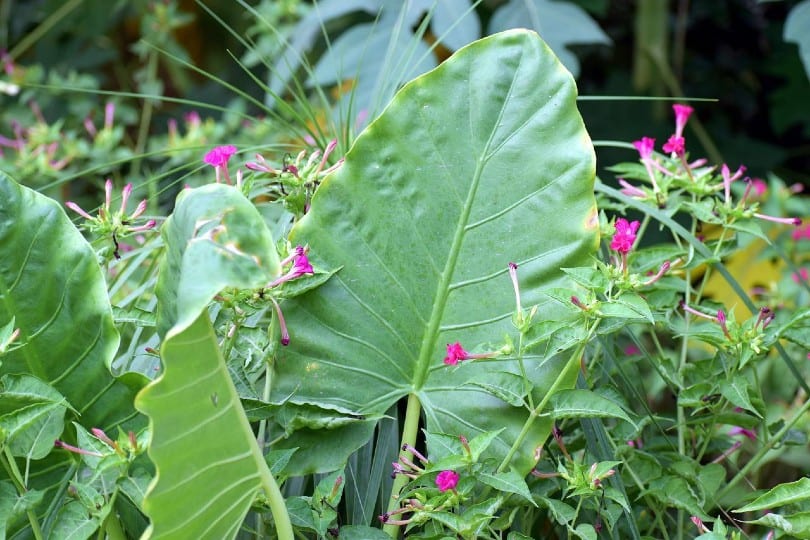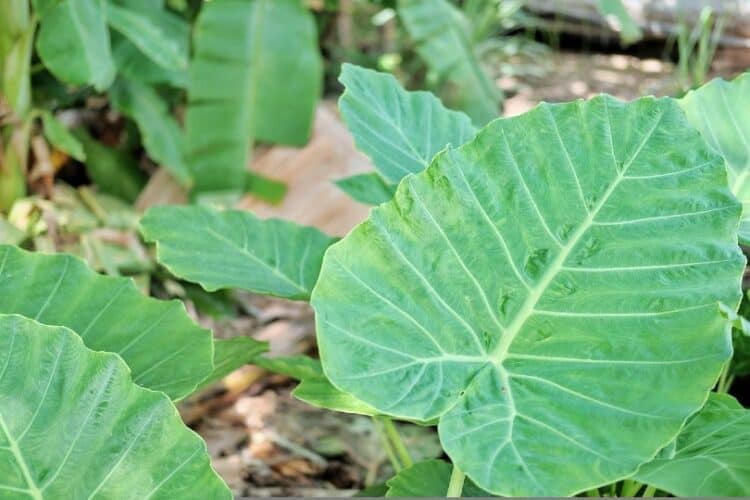The elephant ears plant is a houseplant with giant pointed leaves that look like elephant ears. It’s pretty, but, unfortunately, it can also be toxic and, if left untreated, could become deadly to your dog.
If you believe your dog has eaten any part of an elephant ears plant, you will need to contact your vet immediately. There are also some steps you can take at home before you see the veterinarian. Read on to find out what these are.
Treatment and Symptoms of Elephant Ears Poisoning
The first thing to be aware of is: do not induce vomiting unless a vet tells you to do so. Take a washcloth and rinse it under the cold water. Use this to clean out your dog’s mouth.
You can also wash his eyes and fur if he’s gotten any on himself. The liquid inside the leaves and stalk of the elephant ears plant can irritate your dog’s skin, as can the thorns. So even if he hasn’t ingested it, we suggest cleaning any plant residue from his fur. If the liquid makes contact with his skin, he may experience painful, red, and itchy skin, so the sooner you clean this, the better.
There are two different types of symptoms you will need to be aware of: topical and oral.
Topical
- Burning skin pain
- Eye irritation/tearing eyes
- Inflammation/redness of the skin
Oral
- Abdominal pain
- Burning in the mouth and throat
- Delirium
- Diarrhea
- Difficulty swallowing/swelling of the tongue
- Drooling and foaming
- Lack of appetite
- Lip swelling
- Mouth pain/mouth ulcers
- Nausea
- Numb mouth
- Pawing at the face
- Tongue pain
- Vomiting
- Whining

At the Vets
Elephant ears poisoning, or Alocasia poisoning, is caused by the insoluble calcium oxalate acid in the plant. Calcium oxalate has crystals that attach themselves to the tissues of your dog’s mouth and skin, which causes injury and severe pain.
If you know for certain your dog has ingested the elephant ears plant, bring it with you or take a picture of it to show the vet. Not only will this help with the diagnosis, but it will also help your vet with a treatment plan.
Take note of which part and how much of the plant was eaten, what time it happened, and if you have noticed any symptoms yet. The treatment will all depend on the answers you give your vet, so the faster you get your dog there, the better.
Your dog may be kept overnight, but once he’s allowed to go home, make sure he has a safe and relaxing spot to recover. Your vet may put your dog on a special diet until his digestive system is back to normal, so make sure you’re following these instructions. Make sure he has plenty of fresh water available to him at all times.
Final Thoughts
The elephant ears plant is a dangerous addition to your home, and to avoid this happening again in the future, keep this plant away from your dog. It can be scary when your dog eats something he shouldn’t, but the key is to try not to panic.
It’s crucial you note down any information your vet may need to make a diagnosis, like how much and what part of the plant was eaten and also how long ago it happened. The aim is to act fast but to have as much information for your vet as possible. And then, when he’s home, besides lots of water and rest, make sure to give him as many cuddles as possible!
Featured Image Credit: Pixabay














